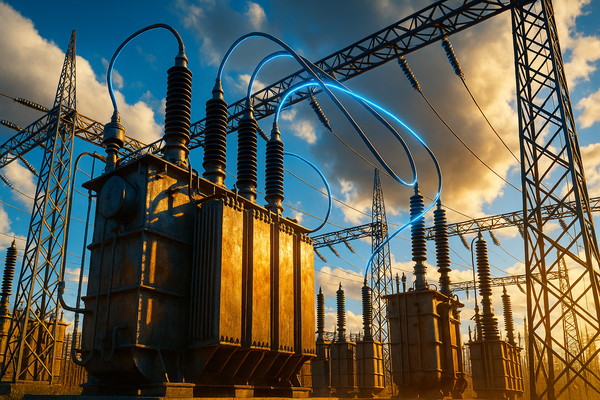The AI Land Crunch: Why U.S. Data Centers Are Running Out of Places to Build
AI megacampuses are accelerating across the U.S., but industrial land, zoning approvals, and community support are running out. A growing “AI Land Crunch” is emerging as the next major constraint on data-center expansion.

Zoning battles, political pushback, and industrial land scarcity are quietly becoming the next major bottleneck in AI expansion.
1. The Land Problem No One Saw Coming
For years, the limiting factor for U.S. data-center growth was power: not enough generation, not enough transmission, not enough transformers.
But as AI campuses scale from 50 MW to 500 MW and beyond, developers have quietly run into an equally challenging bottleneck:
There is no longer enough land zoned, approved, or politically acceptable for large-scale data centers.
This land squeeze is now surfacing coast to coast:
- Northern Virginia has seen moratoriums, height restrictions, and escalating community resistance.
- Central Ohio and Phoenix are experiencing land-price inflation normally associated with logistics hubs.
- Oregon, Georgia, and Texas counties have begun rejecting previously welcomed data-center proposals.
- Several jurisdictions have moved to ban new data centers outright due to water or noise concerns.
The biggest surprise?
Some of the sharpest pushback is coming from regions that just two years ago were actively courting hyperscale projects.
2. Why AI Is Accelerating Land Scarcity
AI workloads have changed the economics of physical infrastructure.
A generation ago, a 20–30 MW facility was large. Today’s AI megacampuses require hundreds of acres and hundreds of megawatts — and they need it fast.
Three forces are driving land scarcity:
(1) Scale is consuming traditional industrial zones.
Many municipalities simply do not have 200–300 contiguous acres zoned for heavy infrastructure.
Logistics and manufacturing have already absorbed much of that inventory.
(2) Local politics have shifted.
Communities are now raising concerns about:
- power demand
- water usage
- noise
- diesel backup generators
- visual impact
- limited job creation relative to land use
NIMBY is evolving into NIDBY — “Not in Data Center Backyards.”
(3) AI is compressing timelines.
Hyperscalers want shovel-ready land in 12–24 months.
But zoning, permitting, and community hearings often take longer than the build itself.
This mismatch creates friction that capital alone cannot solve.
3. The Capital-Market Implications
For investors, land scarcity introduces a new source of development risk that wasn’t priced into models even two years ago.
Longer pre-development cycles
Site selection is now a multi-year process involving political forecasting, utility coordination, environmental constraints, and public perception risk.
Greater concentration of capital
As viable sites dwindle, capital is consolidating around a shrinking set of permissive markets — raising land values and reducing geographic diversification.
Renewed interest in rural and secondary markets
Communities with abundant land, lower densities, and fewer competing uses are emerging as winners — provided they can secure sufficient power and water.
Zoning uncertainty becomes a valuation factor
The probability of political reversal (e.g., a permitting pause or community opposition) is now a component of underwriting.
For a sector that once scaled by replicating the same site model across markets, this is a profound shift.
4. The Operator Perspective: Complexity Before Construction
For developers and operators, the land crunch introduces new operational realities:
(A) Fewer “plug-and-play” sites
Developers increasingly face a tradeoff:
- power-rich sites with zoning battles,
- or land-rich sites with minimal infrastructure.
(B) Public-perception risk must be managed
Noise mitigation, water strategy, carbon transparency, and community benefits are moving from optional to essential.
(C) Multi-site redundancy strategies are rising
Operators are acquiring several candidate sites simultaneously, knowing only one or two will withstand permitting friction.
(D) Political due diligence becomes part of site selection
Understanding local sentiment and legislative dynamics now matters as much as soil conditions or access roads.
This adds cost, time, and uncertainty before a shovel ever touches dirt.
5. The Geographic Shake-Up: Winners and Future Frontiers
Because of land scarcity and political pushback in primary markets, AI infrastructure is beginning to redistribute geographically.
Likely winners:
- Rural Midwest: abundant land, improving transmission, supportive counties
- Southeast: lower density, strong utility coordination (with pockets of opposition)
- Texas (select regions): power-generation potential + land availability
- Mountain West: growth in edge computing and rural development incentives
Likely pressured markets:
- Northern Virginia: land friction + political fatigue + noise issues
- Santa Clara / Silicon Valley: land scarcity and high competing uses
- Portland / Hillsboro: increasing community resistance
- Phoenix: water optics and zoning tension
- New Jersey: competing industrial priorities
AI is creating a new map of viable digital-infrastructure regions.
6. The National Consequence: Can the U.S. Keep Up?
If land availability constrains deployment, the U.S. faces three macro risks:
(1) Slower AI capacity growth
Even with GPUs, power, and capital — no land = no megacampus.
(2) Increasing concentration risk
If only a few counties approve large-scale builds, AI capacity becomes geographically fragile.
(3) Losing ground internationally
Regions with faster permitting (e.g., parts of Asia and the Nordics) could absorb demand the U.S. cannot site.
The U.S. AI boom is not guaranteed — it hinges on policy coordination, infrastructure investment, and local sentiment.
7. So What? Now What? — The Datacenter Economist View
For investors:
Expect longer development timelines, higher pre-construction capital expenditure, and increased political-risk premiums in underwriting.
For operators:
Diversify site-acquisition strategies, prioritize community engagement early, and anticipate multi-year zoning efforts.
For policymakers:
Recognize that AI infrastructure is now a national competitiveness issue. Permitting velocity and industrial land planning will shape the next decade of digital infrastructure.
For the industry as a whole:
The next constraint after power may be something far simpler — and harder to solve:
Finding places to build at the scale AI demands.
The AI Land Crunch is here, and it is reshaping the map of global infrastructure.




